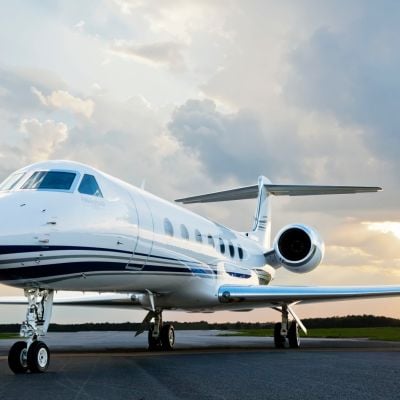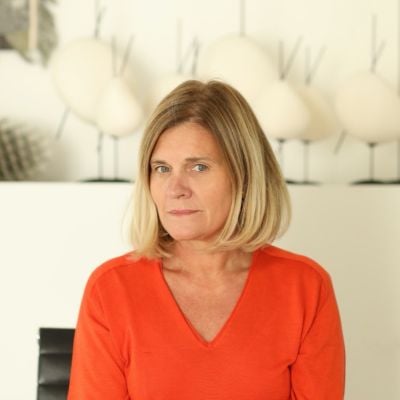The Beauty of Reykjavík

Reykjavík has it all, from its colourful capital to its easy access to natural wonders.

The sky above Reykjavík is rose-gold, with the evening sun gleaming off the Harpa concert hall’s glass honeycomb façade, lighting the old harbour and snowy mountains beyond. Walking along the waterfront, I watch the sailboats and seals bobbing in the inky-blue North Atlantic, the exotic seabirds overhead.
The beauty of Reykjavík, which means smoky bay, is its access to nature. What’s equally amazing is the amount of culture crammed in this compact, colourful capital. At its heart, downtown Reykjavík’s main drag Laugavegur is a hive of bohemian glamour, blazing with Pop Art murals, hip boutiques, vegan cafes, vinyl record shops and late-night bookstores along its cobbled streets.
The city is easy to explore in a couple of days while squeezing in an excursion or two. The futuristic hilltop church Hallgrímskirkja, soaring above the skyline, serves as a useful compass. This iconic landmark, inspired by Iceland’s volcanic lava flows, is an architectural wonder that took four decades to build.
In the summer, when there’s almost constant daylight, the streets fizz with the energy of a carnival: the parks and picturesque Austurvöllur square outside parliament heaves with people and concerts, and bistros and bars hum late into the night. While it might be the latest international party hub and hotbed of creativity, Reykjavík has a small-town sleepiness and feels authentic: brightly painted metal and timber houses with cats in every window; stoops with gnomes and geraniums; and intriguing courtyards with people chatting over coffee and cards.
Part of the lure of this tiny, largely uninhabitable, island lies in its otherworldliness and the unexpected. Icelanders are known for their quirks — they have offbeat national events such the International Silly Walks Day in homage to the famous Monty Python sketch and believe in fairies and elves, otherwise known as hidden people, with supernatural powers that are used to explain many of the country’s otherworldly formations.
Considering it’s proximity to the Arctic Circle, Reykjavík’s climate is quite mellow but unpredictable. As the searing sunshine turns to savage winds in a flash, I duck into a kitschy café and chat to the owner Einar, a sprightly middle-aged man, who, like many residents, is disenchanted with the carving up of the city, where half the nation lives. “It’s the Wild West. Everything’s up for grabs,” he says, gesturing outside at the jumble of construction sites for new hotels to cater to the skyrocketing numbers of visitors. Tourism now eclipses fishing as the country’s biggest industry.

Reykjavík is dotted with iconic churches (c) Britt Collins
“To understand the people and the culture, you have to see the land,” says Einar, and then, along with my espresso, offers a snapshot of Icelandic history: enduring centuries of feudal wars; Norwegian and Danish rule; natural disasters; famine and, later, British and US occupation. I learned, among other things, about the end-of-summer puffin rescues of locals collecting lost chicks to take them out to sea and centuries-old horse round-ups when farmers gather their untamed herds from the mountains and home to the stables for the brutal winters.
Soon after leaving the city, I am plunged into the wilderness. The coastal road that circles the entire country in 830 miles of surreal scenery shifts from black cliffs and silvery sea to volcanic desert and velvety-green moors. Passing through the town of Selfoss, I stop to pat the sweet Icelandic horses, with furry little foals at their side. With their sweeping manes waving in the breeze, these wild-looking but gentle beauties are descendants of the herds the Vikings brought from northern Europe over 900 years ago.
It’s still light at 9pm when I reach Thingvellir National Park, where the first existing parliament assembled in 930AD, down twisty mountain roads past alpine lakes and valleys and geothermal plants. Wandering through this moonscape of mossy lava fields, smoking geysers and hissing mud pits, where nothing grows and everything feels alive, has a whiff of danger, like stepping across a sleeping giant. One of the fascinating things about Iceland is the freedom and lack of rules — all its natural wonders are free and wide open to everyone.
Walking back to my hotel amid lava fields, at that endless twilight of an Icelandic summer, I’m struck by the sheer wildness, the quirkiness of the people and animals of this extraordinary place, already dreaming of returning.
STAY
The cosily minimalist eco-boutique 101 Hotel is the chicest crash pad in town, with a spare, modernist restaurant serving fancied-up Icelandic fare and a glass-ceilinged bar known as much for its fashionable crowd as its cocktails. The Scandi-chic Hotel Alda combines stylish comforts — pretty roof terrace, a gym with sauna — with thoughtful touches, such as a smartphone on loan to help you explore the city. Nature and design lovers will be wowed by the Ion Adventure Hotel, a glass-and-steel eco-lodge rising from the base of a volcano, within a 40-minute drive of Reykjavík. Keep an eye out for the opening of luxury-spa Lava Cove, set deep within the Blue Lagoon’s natural lava formations. The 62-room Moss Hotel, carved into the edge of the lagoon, will follow in autumn, where rooms will open onto its own private terraces overlooking the volcanic landscape.
EAT AND DRINK
Tucked in a barn-like space on a wild-bird reserve, Dill Restaurant is the first Michelin-starred Icelandic restaurant. Maverick chef Gunnar Karl Gíslason grows and forages for seasonal ingredients to create an inventive cuisine of simple dishes such as rhubarb soup with birch bark or tomato, buttermilk and barley risotto. Inside the same building as Dill, Pizza With No Name, a sort of mystic pizzeria with a dark, romantic interior filled with vintage curiosities and an intriguing menu of flatbread creations. The Laundromat Cafe, a diner-bookshop, is the place to chill over classic tunes and comforting bistro fare of nacho platters and the finest milkshakes in town.
Nestled in Laugardalur Botanical Gardens, Café Flóra is a peaceful hideaway where you can have coffee and breakfast surrounded by wild blooms and goldfish. Sit on the edge of the vines of a tomato-filled greenhouse at Friðheimar Farm and feast on grilled tortillas with tomato and mozzarella and green-tomato Bloody Marys. Inside Nora Magasin, celebrity chef Völundur Völundarson’s bar-brasserie, diners can enjoy French-Japanese fusion dishes in an old-world setting. This folksy late-night lair fizzes with a cosmopolitan crowd and is open into the wee hours. Just as alluring and sophisticated, the Apotek Hotel Lounge, a jewel-box parlour done up in low lights and Art Deco décor, has a nightly happy hour with old-fashioned cocktails. The retro gastro-pub at the Kex Hostel, a converted biscuit factory, is a go-to hotspot for craft beers and live music on weekends.
DESIGN
Iceland’s small-but-spirited design scene is visible everywhere. The best of the new crop of art galleries are Berg Contemporary and i8, both hosting museum-quality shows of homegrown up-and-comers and global stars. The gallery lounge at the Hotel Holt, home to one of the country’s largest private art collections, is a great way to sneak in a bit of culture amid other indulgences. Another gem, Fotografi, a snug photographer’s gallery, sells rare prints along with vintage cameras, books and records. An artsy co-op founded by eight designers, Kiosk has reopened its boutique on Ingólfsstræti, offering a well-edited mix of clothing, knitwear, jewellery and beautiful objects. A striking new addition is a chic little French shop Hyalin that sells handmade tableware, perfumed candles and natural beauty products, along with chocolates, wines, cheeses and other delicacies straight from the farm.
NATURAL WONDERS
Take a dip in the geothermal waters of Secret Lagoon, an authentic crowd-free alternative to the Blue Lagoon, hidden between a forest and rolling hills in the 19-century village of Fludir along the Golden Circle route. Hop on a ferry from the old harbour to see Minke and Humpback whales as well as dolphins, porpoises, puffins on the three-hour boat trip, or go into the wild to Videy Island, a mile off the coast, with wildflower meadows, rocky beaches and Iceland’s oldest church — now a café with outdoor gallery and Yoko Ono’s Imagine Peace Tower memorial to John Lennon.
This article originally appeared in Billionaire's Journey issue, September 2017. To subscribe contact









